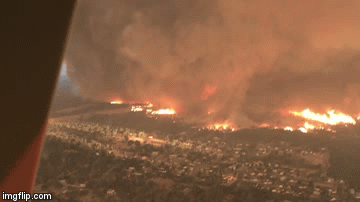Humans are electrical creatures. Our basic biology is controlled by the movement of electrons. In a biological system, instead of moving through a wire, the electrons move from one molecule to another. These reactions are called redox reactions, which is short for reduction and oxidation. when an electron moves from one molecule to another, the molecule that loses the electron is oxidized and the molecule that gains the electron is reduced.
Oxygen, Carbon and Hydrogen have different affinity for electrons. Oxygen really likes to take them, Hydrogen really likes to give them and Carbon is in the middle – happy to either give them to Oxygen as in carbon dioxide (CO2) or take them from Hydrogen as in methane (CH4).
Oxygen really likes to take electrons from Carbon and Hydrogen! Technically, to make a molecule like water, Oxygen doesn’t completely take the electron from Hydrogen. The two share a pair of electrons, one from Oxygen and one from Hydrogen. The shared pair is known as a “covalent bond”. But it’s an uneven sharing, like a relationship where when you share a beer one person drinks the beer and the other gets a few sips. In atmospheric Oxygen (O2), Oxygen is being forced to share it’s electrons with another Oxygen molecule. Of course 2 Oxygen molecules have equal affinity for electrons and so each Oxygen only ever gets to drink half a beer. But when Oxygen shares its electrons with Hydrogen or Carbon it gets to drink the whole beer! Even though they are technically sharing. For this reason, Oxygen can be pretty aggressive about going after electrons from hydrocarbons like methane (CH4). Here’s what that equation looks like.
Methane (Hydrocarbon) + Oxygen —> Water + Carbon Dioxide + Heat
The methane molecule just got oxidized! Which is to say that Oxygen took methane’s electrons. All of the Hydrogens and Carbons that were in the methane are now bonded to Oxygen. Oxygen now has a much bigger share of the electrons. Oxygen is much happier with its new relationships, the whole system is stabler and the reaction gives off heat. If this reaction happens to enough molecules, enough heat is given off that the heat itself can catalyze more oxidation reactions like this. Those reactions give off more heat which in turn acts as a catalyst for more oxidation. This is positive feedback loop. This feedback loop creates fire!
I used methane (natural gas) as an example because it’s the simplest hydrocarbon. But hydrocarbons are all around us – wood, paper, starch, fat, sugar and protein are all hydrocarbons. All of these things are capable of carrying on the positive feedback loop of oxidation known as fire. Sometimes this can get positively explosive.

On July 26th, 2018 a wildfire in California spawned the strongest tornado in state history. Dubbed the fire tornado, it is the most dramatic natural example of oxidation in action. This was a weather event caused completely by molecular Oxygen (O2) taking electrons from the hydrocarbons in wood, plastic and other burnables. It was a positive feedback loop where oxidation led to heat which led to more oxidation which led to a tornado of fire.
Strong stuff.
Of course, it wasn’t always like this. The primordial atmosphere didn’t contain any free oxygen. Back then we had a reducing atmosphere, unlike the oxidizing atmosphere that we have now. If there were a way to travel back to then, your car would never rust. On the other hand you’d be asphyxiated within minutes. Pluses and minuses.
In our next post we’re going to take a look at The Oxygen Catastrophe.
